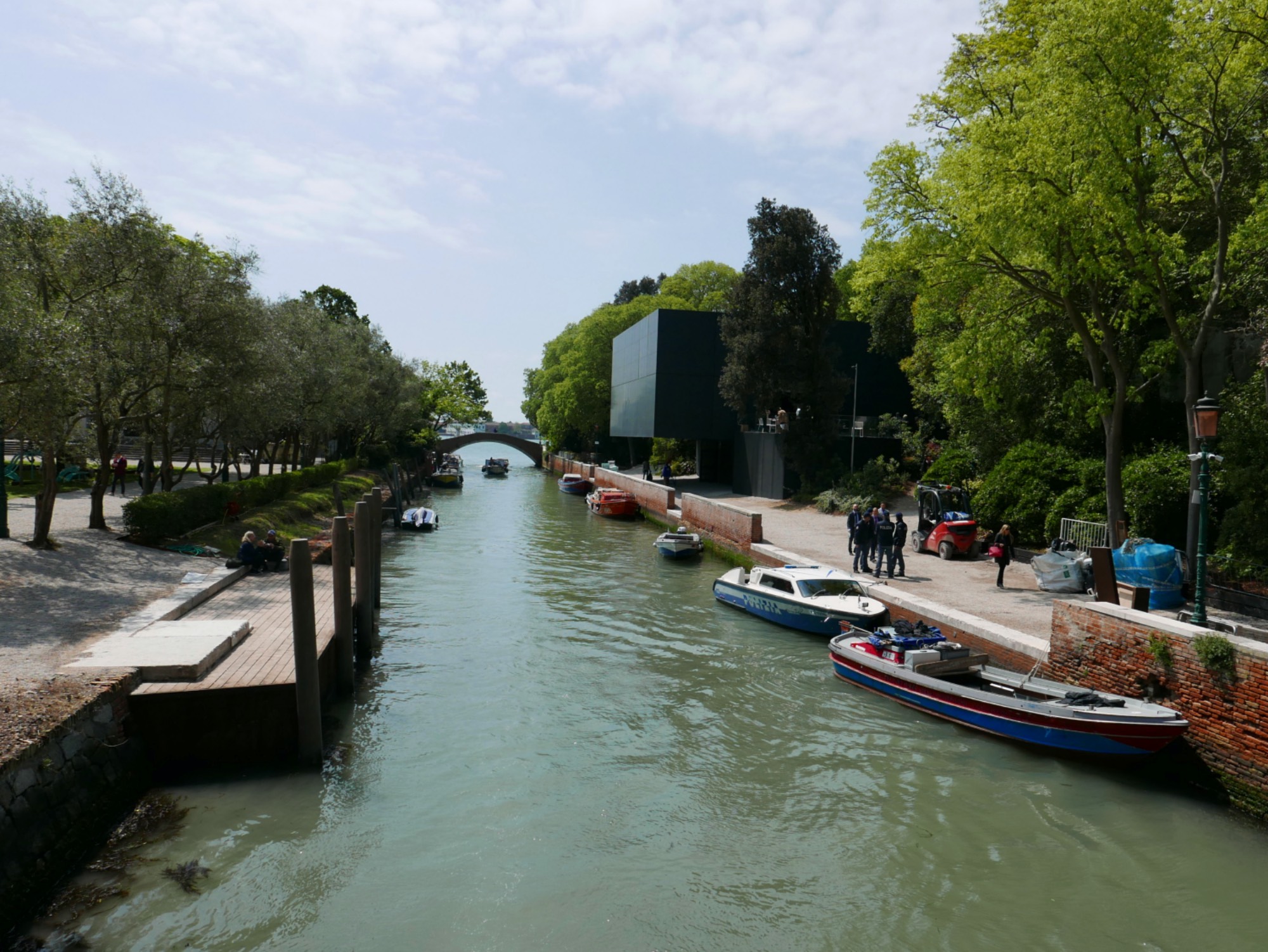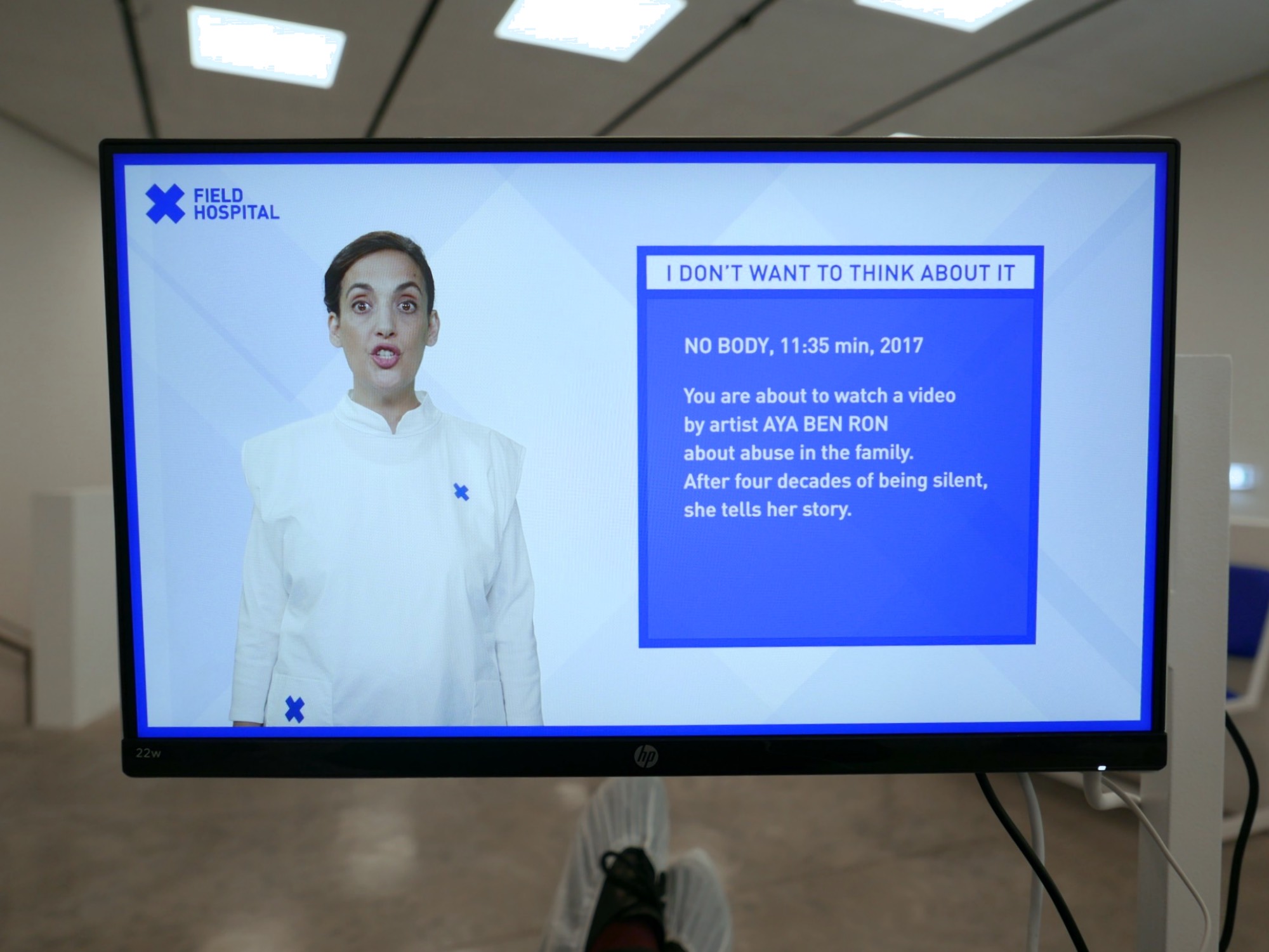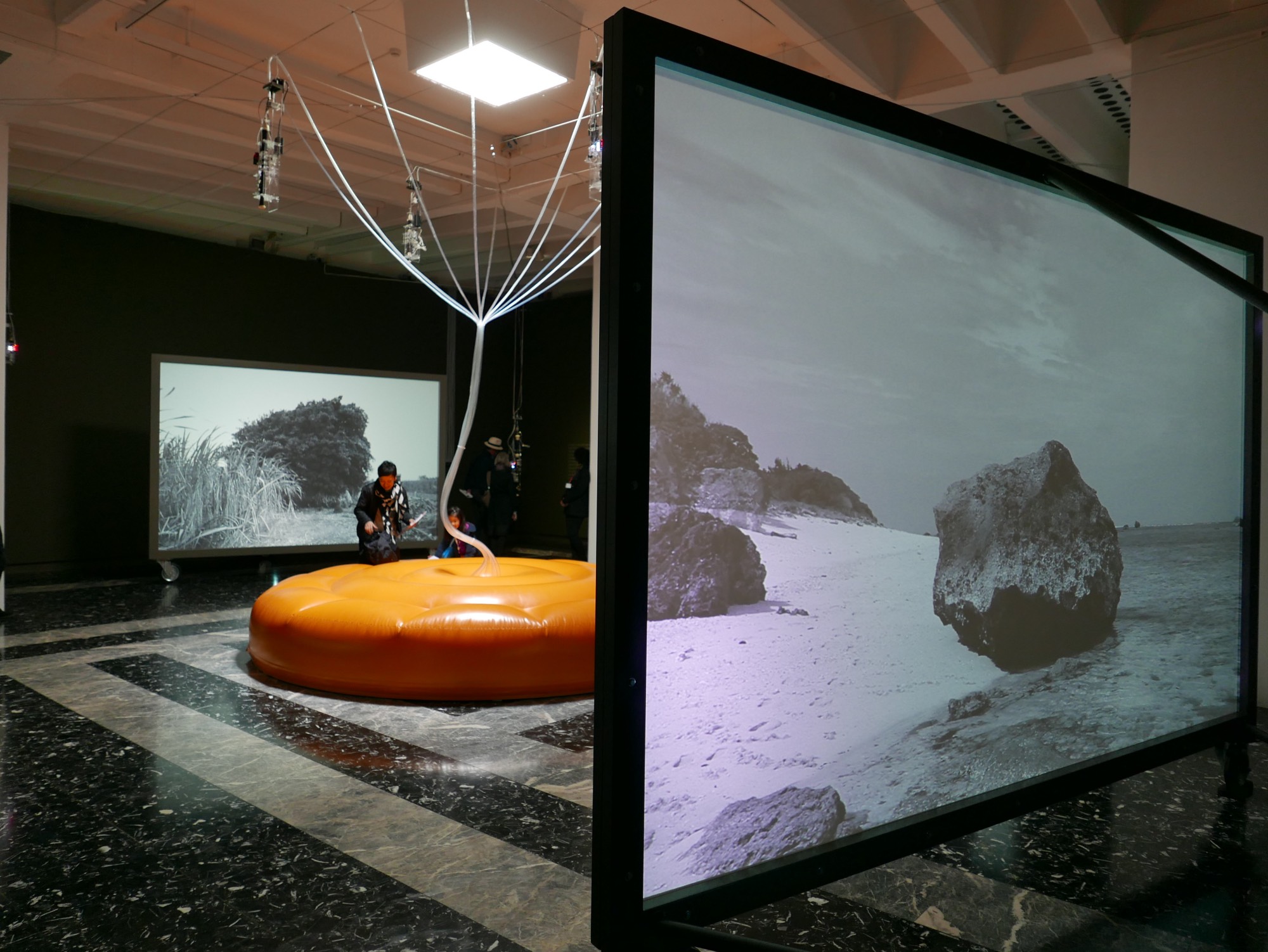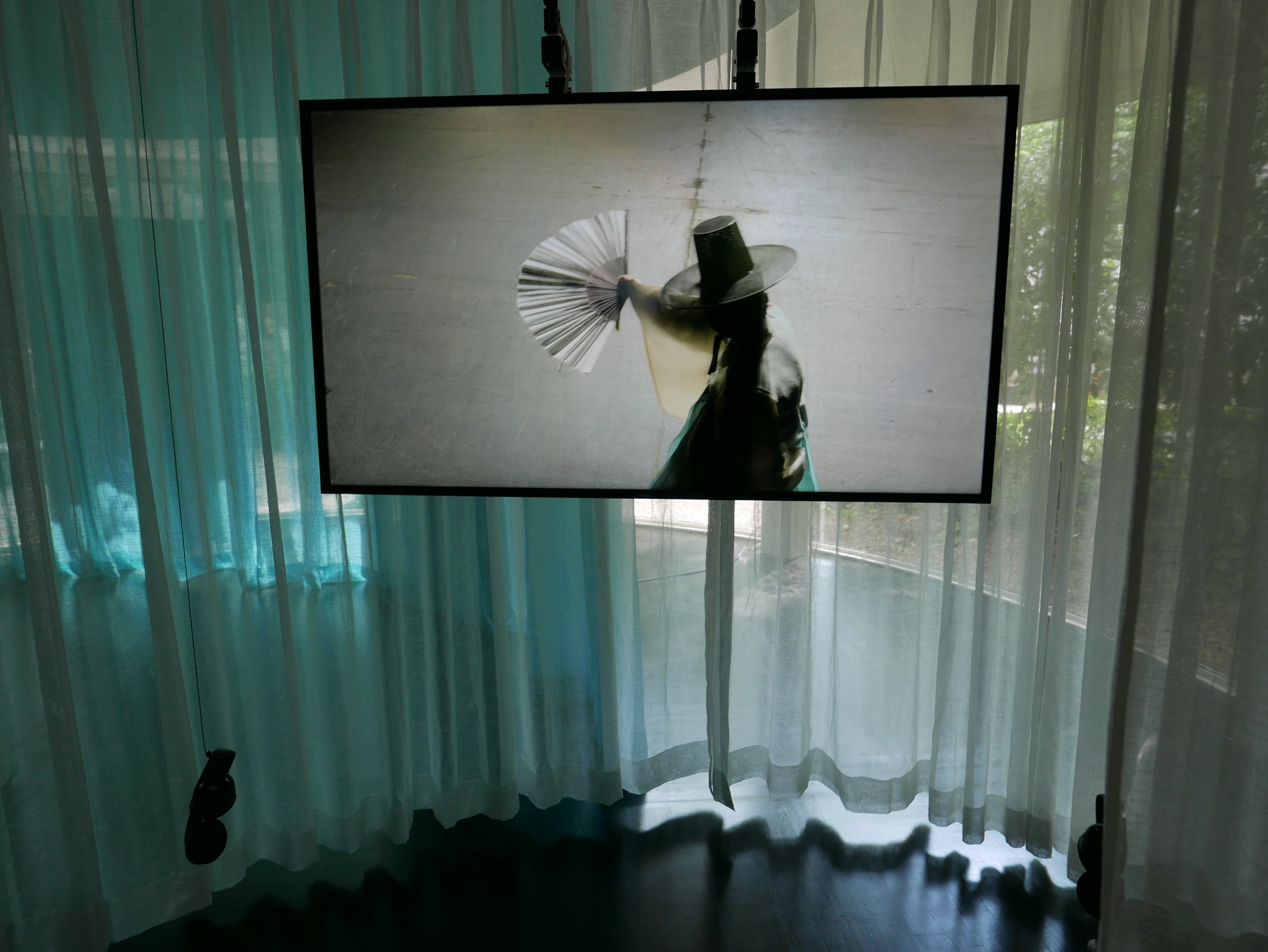Shows
58th Venice Biennale, Part 2: National Pavilions in the Giardini


In 2019, nearly all of the strongest pavilions at the Venice Biennale were by women—including the Gold Lion prize-winning Lithuania Pavilion. Around the European pavilions in the Giardini, Laure Prouvost represented France with a fog-spraying facade, a three-channel roadtrip film and a tunnel in the direction of the British Pavilion, where Cathy Wilkes was showing her creepy ripostes on English middleclass objects. National isolation was a prevalent concern in the German Pavilion where Natascha Sadr Haghighian, going by the name Natascha Süder Happelmann, brutalized the interior, ripping out piping from the walls and installing eerie piles of rocks and a gigantic concrete dam wall running up through the main space, turning the space into an immigrant detention camp. Dance and performance was another theme, with Pauline Boudry and Renate Lorenz’s Switzerland Pavilion showing a film of dancers “moving backwards,” inspired by the erosion of democratic progress and equality in places from Tehran to Kurdistan, São Paulo, Cairo, and Los Angeles. The national pavilions of Finland and Canada looked at environmental issues from Sami and Inuit indigenous perspectives, respectively. Around the Giardini, here’s a more detailed look at the five pavilions showing artists from Asia and the Middle East, where topics of self-determination, democracy, and healing were all notable concerns among the artists.

Australia
Angelica Mesiti
“Assembly”
In a red-carpeted room, with a small amphitheater in its center, three large screens play Angelica Mesiti’s newly created 25-minute work Assembly (2019). Inspired by Mesiti's encounter with the 19th century Michaela stenographic machine—a piano keyboard used to record Italian parliamentary procedures—the video traces the translation of a poem by David Malouf into music by Max Lyandvert and feminist composer Pauline Oliveros. The video is shot in the wooden-paneled and old leather chambers of the Italian and Australian senates, giving these democracies an outdated appearance. The experience requires a degree of patience, as it builds from these solo performances to later scenes, in which a woman sitting near sofa employs hand gestures from the “Nuit Debout” demonstrations in Place de la République (two hands with spread fingers for “agree”, upward facing palms for “speak louder”, a C-shape for “clarify”), and appears to call forth a Zaffa drumming troupe who play traditional Lebanese wedding drums. There the work builds in tempo, and sonic and visual presence, as young people are seen launching spinning LED objects into the night sky near an old ruin, with chorus of women singing at the end. In its absence of explicit narrative, like other of Mesiti’s works, bodily movement and music provides structure in the process of translation, before the original material becomes something else entirely. Moving, listening, touching, singing—these become crucial forms of communication that defy the historical privileging of logos over pathos.

Denmark
Larissa Sansour
“Heirloom”
Known for her sci-fi-inspired, sometimes satirical, imaginations of the future of the Palestinian people, Larissa Sansour has created engaging new work for the Denmark Pavilion, curated by Nat Müller, and it is her strongest work to date. The two-channel, black-and-white film In Vitro (2019), co-produced with Søren Lind, depicts the ecological destruction of Bethlehem by a flood of black liquid running through the streets and subsequent demolitions and explosions. From there, the Palestinian population appears to have moved underground, where in a brutalist concrete bunker, an older woman (Dunia) lies in bed while she is visited by a genetic copy of her actual daughter (Alia) created from salvaged DNA—the original generation of youth did not survive but Alia still experiences flashbacks of earlier traumatic events. There is discussion between the two women about whether it is time to return to the town or not, and discussions of what it means to be bound by cultural memory but separated by time and distance from the original land of Palestine—all conversations, by analogy, that are taking place today in very real terms. The film isn’t entirely an act of displacement as it also features archival historical footage of events from the city’s 20th century history, suggesting the city’s succession of occupiers from the British, German, to Israeli. The second half of the pavilion is a giant black sphere, Monument for Lost Time (2019) an object that appears in the film as well. It is placed in near darkness on a floor of tiles created in Nablus and copied from the Ottoman-era home used in the film. Together, "Heirloom" presents Sansour’s thinking through future scenarios and alternatives for the Palestinian people conceptually and visually, in a dramatic work whose tone resonates with the dystopian severity of the political and ecological situation in Palestine today.

Israel
Aya Ben Ron
“Field Hospital X”
Situated in the shadow of the United States Pavilion, and boycotted by many Biennale-goers because of Israel’s increasingly expanding and brutal 61-year occupation of Palestine, the Israel Pavilion was transformed this edition into an ersatz medical clinic. Upon entering the miniature modernist structure, you take a number at the door and sit on a bench on the ground floor while watching an informational video about the project until your number is called. The video explains a bit about Aya Ben Ron’s project, titled “Field Hospital X,” which is an experience that begins with a visit to the “Safe-Unit Area,” three padded chambers where you are instructed by an audio track in how to let off primal screams in the private confines. After that, you are led upstairs and sit in a dentist-style reclining chair while watching a video that was made by either the artist or a collaborator. I had selected the wristband with the phrase “I Don’t Want to Think About It,” which then was scanned by one of the assistants in the pavilion and led to Aya Ben Ron’s video No Body (2017), featuring a woman recounting her childhood experiences of sexual molestation by her father (other wristbands led to videos by other artists). The narrative is disturbing and the video well created. Afterwards you can watch two “second opinions,” one from a Lacanian psychoanalyst and the other from a law professor, talking about the protagonist’s experiences. While I appreciated the pavilion’s sentiment that this project is intended as a “place where silenced voices can be heard and social injustices can be seen,” being given an arm band with the phrase “Here anyone can live free” on the way out remains a confoundingly problematic gesture given the undefined parameters of “here” (Tel Aviv? Surely not the occupied West Bank, or for the Sudanese migrants imprisoned in mass camps in the Sinai). No doubt the artist herself and curator Avi Lubin are aware of this—and doubtless understand that the Israel Ministry of Culture and Sport, led by far-right politician Miri Regev, organizes the pavilion—but there remains something about the mock-corporate format of the project that keeps the line between irony and ignorance perhaps too undefined for its own good. A personal narrative about healing from a family trauma shouldn’t be analogized or compared to the current brutality of Israeli occupation on Palestinian communities. “Living free” is quite different than learning to heal, and in all these cases—as a lawyer or psychoanalyst would tell you—words matter a great deal.

Japan
Motoyuki Shitamichi, Taro Yasuno, Toshiaki Ishikura, Fuminori Nousaku
"Cosmo-Eggs"
Curated by Hiroyuki Hattori, the Japan Pavilion was a “collaborative expression” featuring four participants including artist Motoyuki Shitamichi; composer Taro Yasuno; anthropologist Toshiaki Ishikura; and architect Fuminori Nousaku. The pavilion’s concerns begin with Motoyuki Shitamichi’s large projected videos of “tsunami boulders”—gigantic rocks brought out the sea to unlikely places on the Okinawa islands of Yaeyama and Miyako—as if they were from outer space. These boulders are today distinctive ecologies of plants and offer nesting places for bird colonies. Reflecting this, composer Taro Yasuno composed Zombie Music that was played by four suspended recorders, with air pumped through them by large balloons drawing air from the outside up through a hole in the pavilion’s floor via a large orange inflatable structure designed by Fuminori Nousaku. The music played by the automated instruments is intended to be reminiscent of birdsong. The fourth component comprised short stories written by anthropologist Toshiaki Ishikura, whose research concerns human origin myths, particularly those involving creatures born from eggs—which he had researched in Taiwan’s Taitung County region. Each of the short stories, engraved on the walls, attempt to re-imagine human-nature relations through cycles of creation and destruction. The pavilion is meant to inspire new ways of thinking and co-existence, through a model of collaboration by disparate researchers and practitioners. The pavilion requires a fair amount of attention and reading—the catalogue is a particularly well-designed object, with research materials and notes by the curator and contributors—to understand the connection between the four contributions, but the experience is intriguing, especially in comparison to many of the solo artist, gallery-style presentations in neighboring pavilions like France, the UK, and the US.

Korea
siren eun young jung, Jane Jin Kaisen, Hwayeon Nam
"History Has Failed Us, But No Matter"
With multiple videos by three artists—siren eun young jung, Jane Jin Kaisen, and Hwayeon Nam—the Korea Pavilion, curated by Hyunjin Kim, is a lot to absorb and challenging to experience with the cramped spaces of the building being less than ideal for so much visual material. But it’s entirely worth the time. Although it is difficult to see a screen from the outside through a curving window to watch the first part of siren eun young jung’s five-part work A Performing by Flash, Afterimage, Velocity, and Noise (2019), all that is redeemed in a separate room where there’s a recording of a concert by male-role actor Lee Deung Woo; electronic musician and performer KIRARA; lesbian actor Yii Lee; and Seo Ji Won, performer and director of the Disabled Women’s Theater Group “Dancing Waist”; and performer Dragking AZANGMAN. It’s an engrossing video—one curator I spoke with called it the best video in the whole biennale—projected floor-to-ceiling on three walls and visualizes the artist’s stated aim of awakening the “'queer turn’ within an artistic practice.” On the other side of the small pavilion, visitors could sit on the curving stepped platforms embedded with monitors, an artwork itself, A Garden in Italy (2019) by Hwayeon Nam. The video on screen Dancer from the Peninsula (2019) focuses on the life of dancer Choi Seung-hee (1911–1969), who wanted to invent a distinctly modern East Asian dance inspired by Japanese forms of noh and bugaku while living in China during the Pacific War, before she defected to North Korea in 1946—all part of a confusing, contradictory life spent trying to build a modern Asian identity across a fractitious geopolitical landscape. The third artist Jane Jin Kaisen created a two-part video installation Community of Parting (2019), about the ancient Korean shamanic myth of abandoned princess Bari and employing Korean shamans. A large projected video features scenes from Jeju Island, the DMZ, Kazakhstan, South and North Korea, in “a multi-scalar, nonlinear, and layered montage loosely framed around Bari’s multiple deaths.” Despite showing three artists in relatively small confines, the pavilion’s three substantial videos effectively push back against the patriarchalism of Korean history and culture, portraying the importance of creative and spiritual figures in society who are nevertheless often marginalized or pushed out of history.
HG Masters is deputy editor and deputy publisher of ArtAsiaPacific.
The 58th Venice Biennale is on view at various locations in Venice until November 24, 2019.







